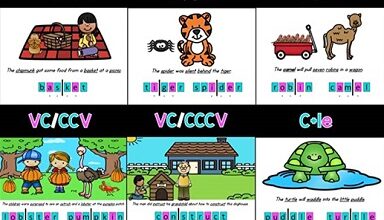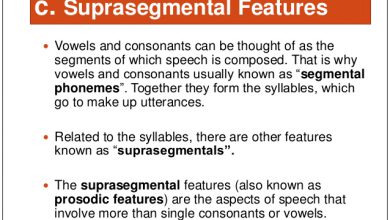When we speak we do not do so in isolation, but rather in a continuous sequence. That is, there is a noticeable difference between the pronunciation of isolated words and the pronunciation of entire sentences in which the discourse is connected. This sequence, in linguistics, is called connected speech. In connected speech, different processes take place by which sounds are linked, intermingled, disappear or even change.
Connected speech is speech. There is often a significant difference between how words are pronounced in isolation and how they are pronounced in the context of connected speech. For example, words or syllables can be cut or run together, or their stresses can change.
Elimination of sounds in connected speech
When words are put together, there is sometimes a deletion of sounds or a substitution of sounds.
For example, watch how want a becomes want, walker a becomes go, rock ‘n’ roll becomes rock ‘n’ roll, or them becomes ’em o’ dem. These are very informal usages and would not be present in the formal writing, but would have a place for the writers to elaborate or capture realistic dialogue.
Elision
Phonetic elision or loss is a change that consists of the elimination or loss of one or several sounds in a word or group of words.
For example: Debt = /det/. Island = /ˈaɪlənd/
linking
There are different types of “linking”. The most common is when one word ends in a vowel and the next word ends in a consonant.
For example: She gets ‿ up ‿ at ‿ eight.
Assimilation
Phonetic assimilation is a change by which the pronunciation of one sound accommodates that of another, giving rise to a change in its sound.
For example : /d/ + /j/ = /dʒ/
would you like some tea? = would + you /wʊd ju:/ = /wʊdʒu:/
Strong/weak forms
Functional words (those that help build the sentence: prepositions, conjunctions and pronouns) can be accented or not depending on where they appear and the emphasis we want to give them.
For example :
his= hɪz ɪz
him= hɪm ɪm
her= hɜː hə, ə, ɜː
you= juː jʊ, jə
The consequences of connected speech in an English learner
What student of English has not been amazed when he has heard the natives speak in England itself? What this student perceives is that the English speak very quickly , with much more than he has heard during his studies, faster than in the movies and he is not able to notice that the English, the same thing happens in other places, they are using connected speech , and their ignorance even leads to frustration.
The issue is further complicated because connected speech is not a phenomenon in which only the union of words intervenes. Also, a given word can suffer alteration as a result of the type of sound that precedes it and, consequently, it can suffer a small variation in intonation and pronunciation. It happens especially with the consonants /t/, /d/ and /n/ that vary to assimilate the sound that comes after.
The elision or disappearance of sounds
The phenomenon of elision is of great importance when talking about connected speech that is defined: as the “disappearance” of a sound. Cases in which elision occur abound , here are the classic assumptions for English learners:
- Loss of the sounds /d/ and /t/ when they appear between two consonants: Hold the line , it would be pronounced /ˈhəʊl ðə ˈlain/, not /ˈhəʊld ðə ˈlain/. The same happens with words like “san(d)wich” or with expressions like “you an(d).
Adding sounds between vowels
If a word ends with a vowel and the next begins with a vowel sound, it is also common for there to be a small variation to make the sentence more fluid and its sound more pleasant. Indeed, those who speak English fluently tend to include a soft consonant between the two, and in this way the sentence becomes more fluid. The dynamic for English is easy, the “consonantal” sound flows naturally from the last vowel, the one that precedes it. If a word ends with the sound “u”, the most logical thing is to insert the sound “w”.
How connected speech affects natives and non-natives
The natives have devices not to get involved with confused expressions. They take into account the context and within it they listen to words with which they are familiar , but this is not the case with non-native inhabitants, who cannot prevent which lexical element may or may not be present in a particular situation.
Comprehension of vowels and consonants to be able to link
To proceed with the link, it is necessary to know the difference between the sounds and the vowels and also the consonants, because the important thing in the link is the sound and not the letter. It is common for the letter and the sound to coincide, but it does not always happen.
Weak forms in the speech of connected speech
The most important functions of connected speech , but also perhaps the most neglected, are its weak forms, which are words or groups of words that have an alternative pronunciation, when they are not underlined. These words are essentially function words, that is, they perform a grammatical function.
Some of the most common words with weak forms in English are: a, am, an y, are, as, at, but, can, could, do, does, for, from, had, has, have, he, her, etc. However, those that are listed as “strong forms” contain a strong vowel, what the weak forms have in common is that they contain a weak vowel. In most cases, this weak vowel is schwa.
When should you use weak forms?
Weak forms are almost always used in English, with few exceptions . It is only possible to use the strong form of a word when you need to emphasize it, give it strength, or when it is placed at the end of a sentence, meanwhile use the weak form.
Languages are dynamic
In languages as in all things in life, there is the same dynamic of evolution, if you don’t want to disappear, you have to constantly make your way, simplifying costs. The same thing happens in languages, not only in English, which is the case that we have dealt with in this article, all languages evolve, let’s review our Spanish and from Don Quixote to here, you can also see that a lot has moved the thing.
But English is neither better nor worse now than before, as long as it continues to fulfill its objective, which is to help people understand each other, and it is the people, who make it evolve to understand each other better, maybe some of those improvements, in At first, they don’t sound good to the ear, because we are used to the above, but custom ends up putting things in their place, English is adapting, neither more nor less, than other languages, to be useful in modern times.
Challenges for non-native speakers
Confusion about meaning can occur when words are put together, especially for non-native speakers listening to native speakers speak. This doesn’t just apply to English learners. Any learner of a foreign language needs listening practice to be able to distinguish individual words from spoken speech.
For example, in Spanish, many words end in vowels, which are joined together when spoken. Take the polite greeting of How are you? (How are you?) Which, when spoken, can often sound like How are you? With barely a pause between words.
When speaking to someone who is not a native speaker, enunciation (not speaking louder) is helpful as pauses are used to give the listener enough time to process everything that is said.
Why is it important in language teaching?
Connected discourse began to be considered in language learning not too long ago and even today it is still not present in many English teaching programs. However, it is very important both to speak better and to understand when they speak to us.
The challenge for speakers of English as a second language is understanding native speakers. Especially, in the 21st century where the barriers between countries have vanished and we communicate much more frequently with people from the other side of the world, and therefore with different accents.


